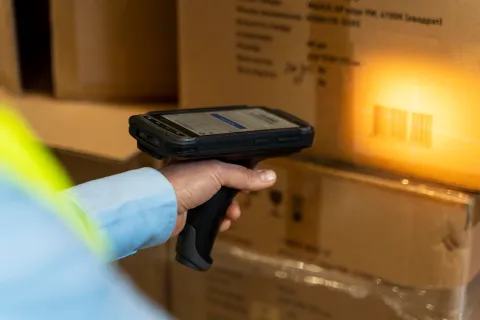
The pharmaceutical industry operates in a highly regulated environment, with stringent labeling requirements and information dissemination. As pharmaceutical companies strive to meet the diverse needs of patients and healthcare professionals, managing labeling for multiple product variants becomes a critical task.
In this blog, we shall explore the significance of harmonizing labeling for multiple product variants in the pharmaceutical industry and the strategies companies can adopt to ensure safety, compliance, and optimal patient outcomes.
The Importance of Harmonized Labeling in the Pharmaceutical Industry
In the pharmaceutical industry, product labeling serves as a vital source of information for patients, healthcare professionals, and Regulatory authorities. Harmonizing labeling across multiple product variants offers several benefits, which are as follows:
- Enhances Patient Safety: Clear and consistent labeling reduces the risk of medication errors such as incorrect dosages, drug interactions, or adverse effects. Harmonized labeling ensures that patients receive accurate and standardized information, which ultimately enhances their safety and well-being.
- Ensures Regulatory Compliance: Regulatory bodies such as the United States Food and Drug Administration (USFDA) and the European Medicines Agency (EMA) require pharmaceutical companies to comply with strict labeling requirements. Harmonizing labeling ensures compliance with these labeling regulations across all product variants; this minimizes the risk of non-compliance and potential penalties. Consistent labeling also facilitates easier audits, inspections, and Regulatory approvals, which saves time and resources.
- Fosters Efficient Inventory Management: Harmonized labeling enables efficient inventory management by providing clear identification and differentiation of product variants. This streamlines processes such as stock tracking, expiration date monitoring, and product recalls. Accurate and consistent labeling also reduces the chances of mix-ups during packaging and distribution, ensuring that each product reaches its target patient.
- Improves Pharmacovigilance: Harmonized labeling plays a crucial role in pharmacovigilance, the process of monitoring and evaluating the safety and efficacy of medications. Consistent labeling leads to accurate reporting and tracking of adverse events, medication errors, and product recalls. This in turn promotes the timely identification of safety concerns and enables companies to take appropriate measures to protect patient well-being.
- Facilitates Global Market Expansion: Harmonized labeling is crucial for pharmaceutical companies aiming at expanding their market presence globally. Consistent labeling ensures compliance with labeling requirements across different countries and regions. Thus, by establishing harmonized labeling, companies can easily enter new markets, get faster product approvals, and build cohesive global brand images.
- Supports Effective Communication with Healthcare Professionals: Harmonized labeling provides healthcare professionals with consistent and comprehensive information, enabling them to make informed decisions regarding medication selection, dosage, and administration. Standardized labels facilitate effective communication between pharmaceutical companies and healthcare providers, promoting patient safety and optimal treatment outcomes.
- Enhances Patient Trust and Satisfaction: Consistent labeling instills trust and confidence in patients. When patients come across consistent and easily comprehensible labeling across different product variants, they feel confident to take the specific medications they are prescribed. Thus, harmonized labeling fosters patient satisfaction, loyalty, and long-term relationships between patients and pharmaceutical companies.
- Promotes Brand Integrity: In a highly competitive market, pharmaceutical companies must maintain brand integrity. Harmonized labeling reinforces brand recognition and consistency, fostering trust among patients, healthcare professionals, and stakeholders. It creates a cohesive brand identity that reflects quality, reliability, and commitment to patient care.
Strategies for Harmonizing Labeling in the Pharmaceutical Industry
Here are some of the key strategies that pharmaceutical companies can use to harmonize labeling:
- Standardize the Key Elements: Identify essential elements such as drug names, strengths, dosage forms, and indications, and ensure that they are consistent across all product variants. To maintain uniformity, implement a standardized template for labels that include these critical components.
- Use Technology: Leverage labeling software and systems that enable centralized management of labeling content. Such tools help streamline the creation, review, and approval processes, reducing errors and ensuring consistency. Consider implementing an automated workflow to maintain version control and facilitate updates.
- Collaborate Across Functions: Effective communication and collaboration between Regulatory Affairs, Marketing, Quality Control, and Packaging teams are crucial for achieving harmonized labeling. Establish cross-functional teams that will align with one another on labeling strategies and review processes and maintain accurate product information.
- Simplify and Streamline Information: Consolidate information to avoid overwhelming patients and healthcare professionals with excessive details. Use concise language, clear graphics, and standardized icons to enhance readability and comprehension. Prioritize essential information, warnings, and precautions to ensure that you effectively communicate critical messages.
- Conduct User Testing and Feedback: Carry out user testing and gather feedback on labeling design and content. Involve patients, healthcare professionals, and user experience experts to identify potential issues and improvement areas. Iterative testing and feedback loops help refine labeling strategies and ensure optimal user experience.
Conclusion
To sum up, harmonizing labeling for multiple product variants in the pharmaceutical industry is of utmost importance, as it ensures patient safety, Regulatory compliance, and brand integrity. By maintaining consistent and accurate labeling across product variants, pharmaceutical companies can help build trust among patients and healthcare professionals, streamline Regulatory processes, and demonstrate their commitment to delivering high-quality medications.
If you want to achieve effective harmonization, partnering with a specialized labeling service provider like Freyr can offer you significant advantages. We have expertise in meeting Regulatory requirements, labeling standards, and best practices of the pharmaceutical industry. We also have the necessary infrastructure, technology, and resources to help you streamline your labeling processes, ensuring compliance with evolving labeling regulations and industry guidelines. Contact Freyr now!









